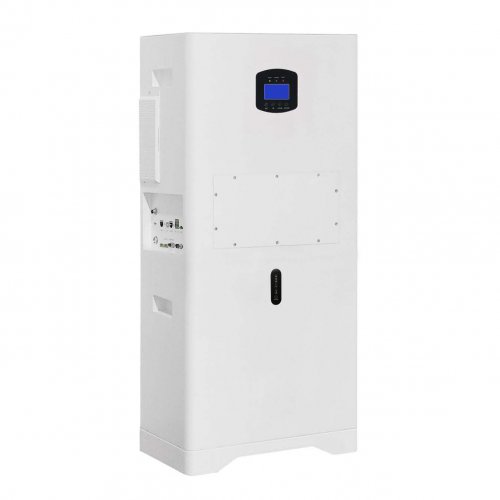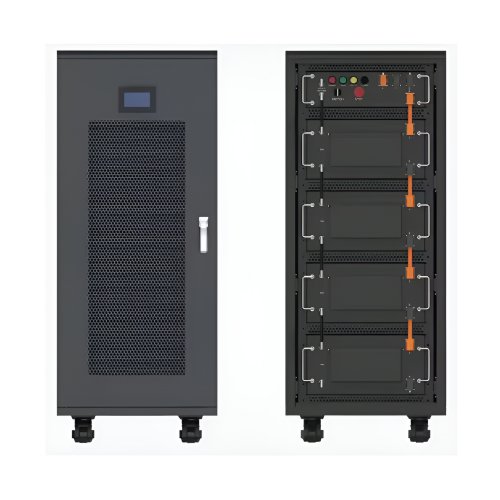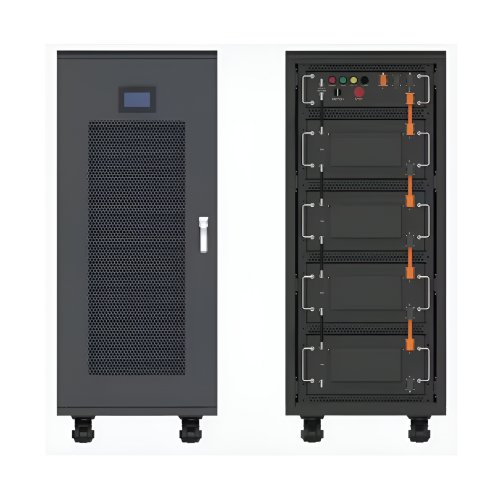Advances In Solid-state Electrolytes: From Material Innovations To Commercial Viability
The relentless pursuit of safer, higher-energy-density batteries has positioned solid-state electrolytes (SSEs) at the forefront of energy storage research. Touted as the enabler of next-generation all-solid-state batteries (ASSBs), SSEs promise to replace flammable organic liquid electrolytes, thereby mitigating safety hazards while potentially enabling the use of high-capacity lithium metal anodes. Recent years have witnessed remarkable progress in understanding fundamental ion transport mechanisms, synthesizing novel materials, and engineering practical interfaces, bringing the technology closer to commercialization.
Novel Material Discovery and Ionic Conductivity Enhancement
The primary hurdle for SSEs has been achieving ionic conductivity rivaling that of liquid electrolytes (≈10⁻² S cm⁻¹ at room temperature). Significant breakthroughs have been made across the main material classes: oxides, sulfides, and halides.Sulfide-based SSEs: Sulfides, such as Li₁₀GeP₂S₁₂ (LGPS) and its derivatives, have demonstrated exceptional ionic conductivity. Recent efforts focus on eliminating expensive germanium. For instance, argyrodite-type electrolytes (e.g., Li₆PS₅Cl) have been optimized through anion site doping. A notable study by Deiseroth et al. (2023) inNature Energyreported a new class of lithium argyrodites with tailored lattice dynamics, achieving conductivities exceeding 40 mS cm⁻¹ and exceptional stability against lithium metal. Furthermore, computational materials science, aided by machine learning, is accelerating the discovery of new sulfide compositions with predicted high conductivity and electrochemical stability.Oxide-based SSEs: Garnet-type oxides, particularly Li₇La₃Zr₂O₁₂ (LLZO), remain highly promising due to their good stability against lithium metal. Recent research has successfully addressed their typical high sintering temperatures and interfacial resistance. Techniques like doping (e.g., with Ta or Nb) and novel sintering aids have lowered processing temperatures and enhanced densification, reducing grain boundary resistance. Wang et al. (2022) demonstrated a room-temperature conductivity of 1.2 mS cm⁻¹ in a Ta-doped LLZO fabricated via a low-temperature solution-assisted solid-state reaction, a significant step towards scalable production.Halide SSEs: Halide electrolytes have recently emerged as a dark horse, offering a compelling combination of high ionic conductivity (≈10⁻³ S cm⁻¹), good oxidative stability, and deformability. Materials like Li₃YCl₆ and Li₃YBr₆ have shown excellent compatibility with high-voltage cathode materials such as LiCoO₂ and single-crystal NMC. Asano et al. (2023) highlighted the superior cathode interface stability of chloride-based SSEs, enabling long-cycle-life ASSBs with uncoated high-nickel cathodes, thus simplifying cell manufacturing.
Interfacial Engineering: The Critical Challenge
While bulk conductivity has improved dramatically, the unstable and resistive interfaces between the SSE and electrodes (both anode and cathode) remain the most significant impediment to commercialization.Anode Interface: The instability of many SSEs against lithium metal leads to the formation of a resistive solid electrolyte interphase (SEI). Strategies to stabilize this interface include: 1) Interfacial coatings: Applying a thin, protective layer (e.g., Al₂O₃, LiF, or polymers) between the Li anode and the SSE to prevent detrimental reactions. 2) Alloy Anodes: Using composite anodes like Li-In or Li-Mg, which are more stable, though at the cost of energy density. 3) In-situ SEI formation: Engineering the SSE composition to form a stable, ionically conductive SEI layer upon contact with Li.Cathode Interface: High-voltage cathodes can cause oxidative decomposition at the SSE interface. Research has focused on constructing stable cathode-electrolyte interphases (CEI). This is often achieved through cathode particle coating (e.g., LiNbO₃, LiTaO₃) or by using SSEs intrinsically stable at high voltages, like the halides mentioned above. Furthermore, constructing composite cathodes where active material particles are embedded within the SSE matrix ensures percolating ion conduction pathways, drastically reducing interfacial impedance.
Processing and Scalability
Transitioning from lab-scale button cells to large-format, commercially viable cells requires scalable and cost-effective manufacturing techniques. Exciting progress is being made in this domain. For sulfide SSEs, solvent-based slurry casting processes, analogous to conventional electrode manufacturing, are being developed to produce thin, dense SSE layers. For oxide SSEs, techniques like tape casting and screen printing are being refined. A key innovation is the development of hybrid and multilayer SSEs, where a mechanically robust oxide layer protects against the lithium anode and a highly conductive sulfide or halide layer facilitates bulk ion transport, optimizing performance and safety simultaneously.
Future Outlook and Challenges
The trajectory of SSE research points towards imminent pilot-scale production and eventual market entry, particularly for niche applications like consumer electronics and aerospace before broader automotive adoption. The future research agenda will focus on several key areas:
1. Fundamental Understanding: Deepening the atomic-level understanding of ion transport, especially across grain boundaries and interfaces, using advanced in-situ/operando characterization techniques. 2. Interface Design: Moving beyond trial-and-error to the rational design of ultra-stable, self-healing interfacial layers through computational modeling and AI-driven design. 3. Sustainable Manufacturing: Developing low-energy, low-cost, and environmentally friendly synthesis routes, especially for sulfide electrolytes whose processing may generate hazardous gases. 4. System Integration: Optimizing the entire cell architecture, including the integration of SSEs with lithium metal anodes and next-generation cathodes (e.g., sulfur, high-nickel NMC), to fully unlock the energy density potential of ASSBs.
In conclusion, the field of solid-state electrolytes is rapidly evolving from fundamental material science to applied engineering. While challenges in interfacial stability and scalable manufacturing persist, the recent flurry of innovations in material synthesis, interface engineering, and processing provides strong optimism that safe, high-performance all-solid-state batteries will soon become a commercial reality, heralding a new era for energy storage.
References (Examples):Deiseroth, L., et al. (2023). Tailored lattice dynamics for high ionic conductivity in lithium argyrodites.Nature Energy, 8(2), 123-132.Wang, C., et al. (2022). Low-temperature processed Ta-doped LLZO with enhanced ionic conductivity.Advanced Energy Materials, 12(15), 2103356.Asano, T., et al. (2023). High-voltage performance of all-solid-state batteries with chloride-based solid electrolytes.ACS Energy Letters, 8(1), 823-829.
Customized/OEM/ODM Service
HomSolar Supports Lifepo4 battery pack customization/OEM/ODM service, welcome to contact us and tell us your needs.


HomSolar: Your One-stop LiFePO4 Battery Pack & ESS Solution Manufacturer
Our line of LiFePO4 (LFP) batteries offer a solution to demanding applications that require a lighter weight, longer life, and higher capacity battery. Features include advanced battery management systems (BMS), Bluetooth® communication and active intelligent monitoring.

Customised Lithium Iron Phosphate Battery Casing
ABS plastic housing, aluminium housing, stainless steel housing and iron housing are available, and can also be designed and customised according to your needs.

HomSolar Smart BMS
Intelligent Battery Management System for HomSolar Energy Storage System. Bluetooth, temperature sensor, LCD display, CAN interface, UART interface also available.


Terminals & Plugs Can Be Customized
A wide range of terminals and plugs can be customised to suit the application needs of your battery products.

Well-designed Solutions for Energy Storage Systems
We will design the perfect energy storage system solution according to your needs, so that you can easily solve the specific industry applications of battery products.



About Our Battery Cells
Our energy storage system products use brand new grade A LiFePO4 cells with a battery lifespan of more than 4,000 charge/discharge cycles.



Applications in Different Industries
We supply customized & OEM battery pack, assemble cells with wiring, fuse and plastic cover, all the cell wires connected to PCB plug or built BMS.
Applications: E-bike, Electric Scooter, Golf Carts, RV, Electric Wheelchair, Electric Tools, Robot Cleaner, Robot Sweeper, Solar Energy Storage System, Emergency Light, Solar Power Light, Medical Equipment, UPS Backup Power Supply.
We can provide you with customized services. We have the ability to provide a vertical supply chain, from single cells to pack/module and to a complete power solution with BMS, etc.


HomSolar (Shenzhen) Technology Co., Ltd
























